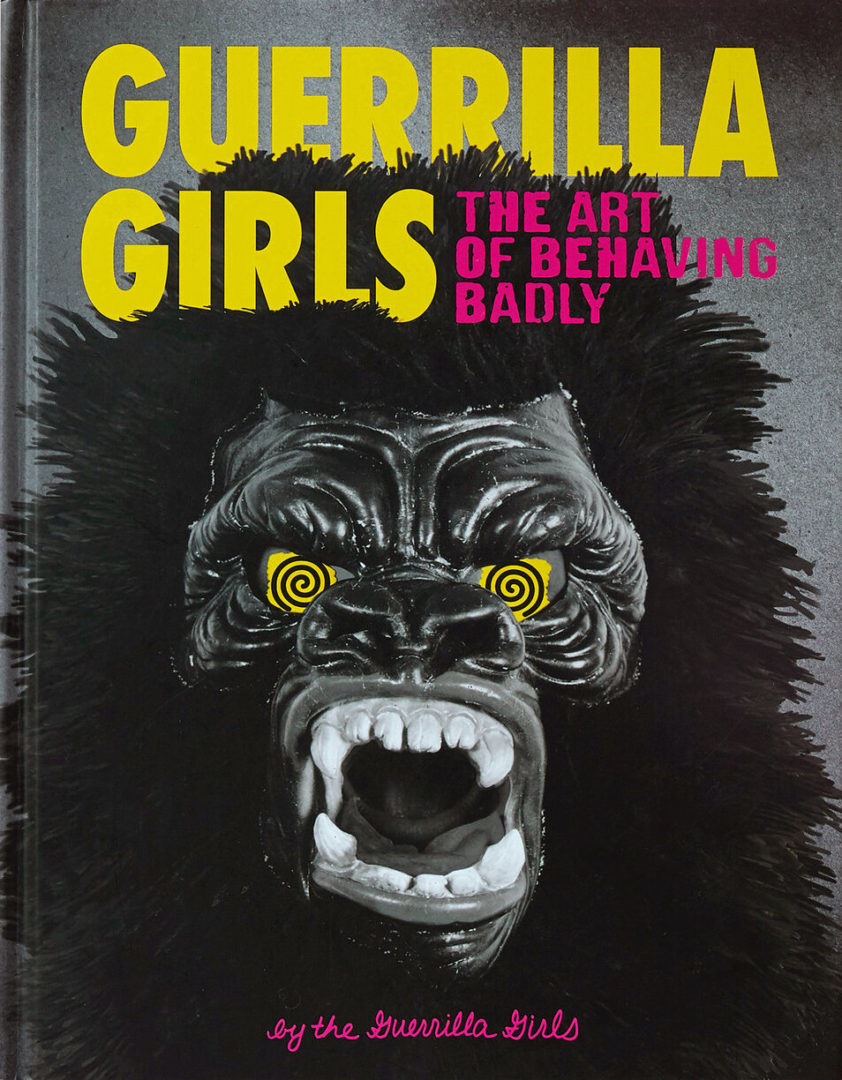Since the reopening of art galleries and museums in New York City, it has been a race to see as much art as possible in anticipation of yet another shutdown. In the meantime, I have also hunkered down with a selection of books about art history, the contemporary art scene, museum practices, private collections and other art related books. These books not only appealed to my general interests but informed my regular contributions to Daily Art Magazine.
Here’s a look at some books that have not only kept me occupied but have helped me reconnect with my art history past. I highly recommend these books to anyone looking for interesting reads pertaining to art.
Guerrilla Girls: The Art of Behaving Badly, Guerrilla Girls
The Guerrilla Girls recently published Guerrilla Girls: The Art of Behaving Badly and I have written an article for Daily Art Magazine to commemorate 35 years of activism by this feminist collective. Follow this link to read more.
We Are Here – Visionaries of Color Transforming the Art World, Jasmin Hernandez, Founder of Gallery Gurls
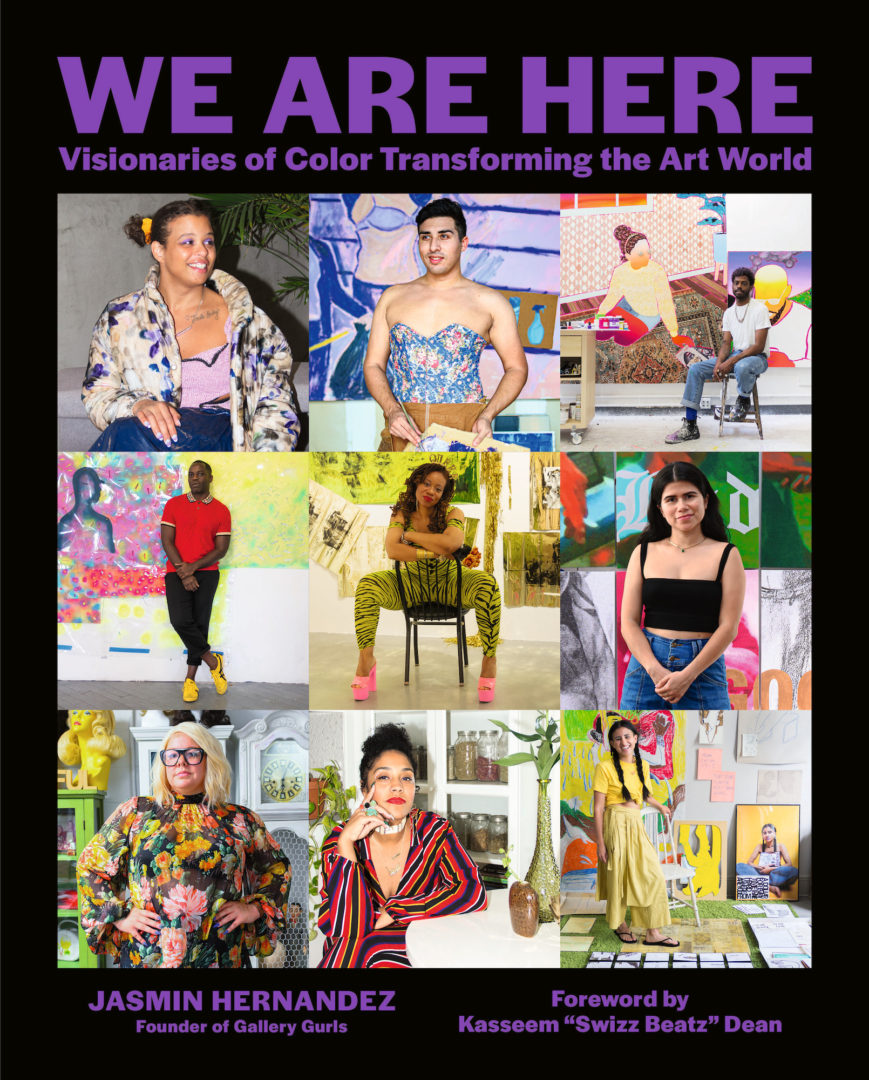
Over the past year, I learned how to utilize Instagram as an art portal and it did not disappoint. I underestimated the potential for social media to serve as an educational resource as well as a way to network. My online adventures led to my most recent book review of We Are Here – Visionaries of Color Transforming the Art World and interview with the author Jasmin Hernandez, Founder of Gallery Gurls. This book has led me down numerous paths of discovery, both online and in real life.
Ninth Street Women: Lee Krasner, Elaine de Kooning, Grace Hartigan, Joan Mitchell, and Helen Frankenthaler: Five Painters and the Movement That Changed Modern Art, Mary Gabriel
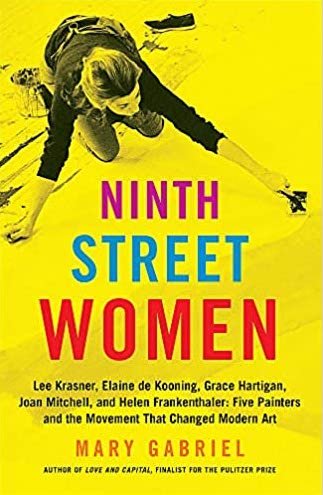
At just under 1000 pages, Gabriel provides a thorough look at the professional and personal lives of five major artists active during the post-WWII period in New York City. It is a refreshingly balanced and in-depth discussion of Lee Krasner, Eliane de Kooning, Grace Hartigan, Joan Mitchell and Helen Frankenthaler as accomplished artists whose careers have to varying extents been overshadowed by their relationships with art world legends. This books takes its time going through the progression of each woman from when they first appeared on the art scene in New York in the first half of the twentieth century through the years of scraping by alongside other legendary artists, critics, curators and dealers. It fleshes out the Abstract Expressionism movement as it took place in New York City and better contextualizes the contributions of these female artists who were not only in the mix but major players among their peers in New York, the city that had become the epicenter of cutting edge contemporary art. The contributions and perseverance of these five women are developed into five separate yet overlapping narratives of strength and conviction. The women struggled and made sacrifices for their careers, each in their own way, but the author does not paint these women, not bound by convention, as victims.
For those who relish reading about everything that happened around the production of paintings that now hang in museums around the world today, this book does not disappoint.
The Whole Picture: The colonial story of the art in our museums & why we need to talk about it, Alice Proctor
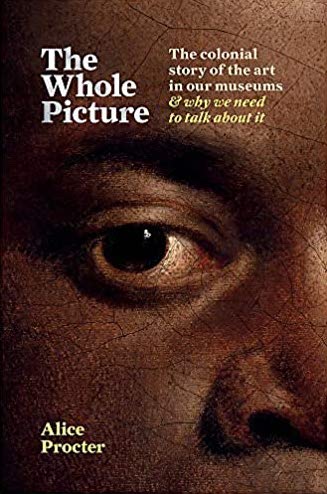
Alice Procter carefully traces the colonialist origins that present problems around the collections and practices of major museums in the West. The author divides the book into four parts: the palace, the classroom, the memorial and the playground. In the first half of the book, Procter works through the uncomfortable truths of how museum collections have been built upon unethical looting practices of westerners/colonizers and the reluctance of western art institutions to openly acknowledge their complicated histories, be transparent and entertain the possibility of returning misplaced objects to their rightful owners. The second half of the book explores the actions of institutions and individuals working within an institutional framework to address atrocities of the past and to make transparent the difficult histories that have been hidden or forgotten.
This book is a quick and satisfying read that moves briskly through the author’s thesis across surprisingly short chapters. The writing is succinct and follows a carefully thought-out argument that resonates with the institutional backlash of 2020 in response to the Black Lives Matter movement. Procter’s “colonial story of the art in our museums & why we need to talk about it” makes for a compelling read.
True Colors: The Real Life of the Art World, Anthony Haden-Guest
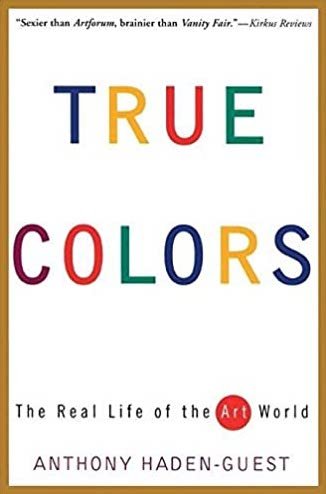
If you are looking for a gossipy, insider view of the inner workings of the New York art galleries, auction houses and art stars of the 1980s and 1990s, dig into Anthony Haden-Guest’s tell-all from 1998. Reading this book more than 20 years after it was written does not diminish its appeal. The origin stories of Mary Boone, Larry Gagosian, Julian Schanbal, Damian Hirst, Jeff Koons and the other mega-watt names from this era is irresistible and simply fun to read. The author digs into the scandals, rumors and career-making decisions that defined the art market boom of this period that profoundly impacted the contemporary art world at the close of the 20th century. The book concludes with the internet on the brink of explosion and the author was left guessing what lay in wait given the rapid developments of technology.
Double Vision: The Unerring Eye of Art World Avatars Dominique and John de Menil, William Middleton
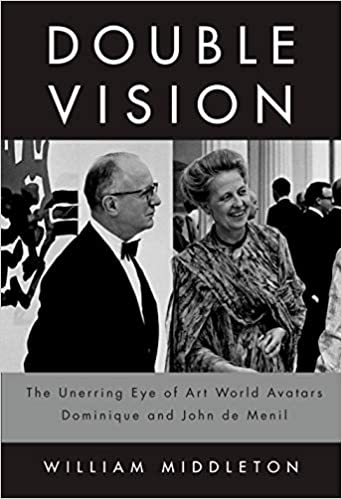
Continuing with my desire to delve deep into the world of the movers and shakers of the contemporary art scene, I could not resist reading William Middleton’s exhaustive look at the lives of Dominque and John de Menil. Their collection is available to the public at the world-renown Menil Collection in Houston where they also built the Rothko Chapel on an art campus that was made possible by this family’s tremendous wealth from the oil industry. The de Menil’s relocated to Houston from France in the 1940s, and spent the next several decades building an art collection, supporting art institutions, near and far, establishing households in Houston, New York and France, and collaborating with major artists, architects, curators, museum directors and others active in the art world in the decades following WWII. The author begins the story of the de Menils by going back several generations and carefully laying out their origins in France. These details surrounding the individual family histories of Dominique and John serve as prelude to their life together from the early days of their courtship through the many decades of marriage, raising children and eventually formalizing their legacy in Houston, all the while tracing the deeply-rooted philosophies and spirituality guiding the accomplishments of this couple.
This family’s wealth and influence extends to the Dia Foundation co-founded by Dominique and John’s youngest daughter Philippa. Click here to read more about the Dia Foundation.
Standing Soldiers, Kneeling Slaves: Race, War, and Monument in Nineteenth-Century America, Kirk Savage
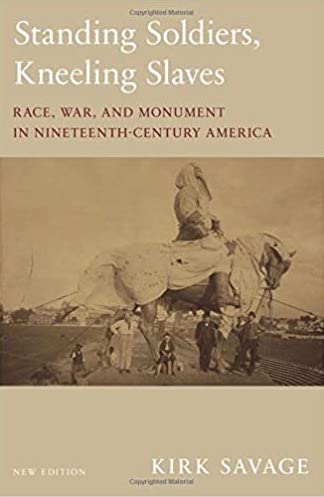
Civil War Memorials were a hot topic this year and rightly so. Black Lives Matter protests forced us as a nation to reconsider Confederate War Memorial and their continued place of honor despite the fact that such monuments uphold racist attitudes that perpetuate white suprematist ideologies. How did we end up with monuments following the conclusion of the Civil War, the defeat of the Confederacy and the abolishment of slavery? Kirk Savage’s book answers these questions with an awareness of the building resentment towards such racist monuments. We learn about the failed attempts by former slaves and their ancestors to erect monuments that honorably acknowledged their struggle leading up to abolition. Local governments across the South were determined to commemorate the heroism of Confederate soldiers and sweep their history of slavery under the carpet, so much so that representations of Black people were almost non-existence but when they did show up in a monument, it was done so in a patronizing manner. Savage provides a thoughtful history of war monuments that have become commonplace across this country. This history clearly outlines the injustices that have led to the tensions we see today around the removal of racist monuments celebrating a skewed version of this nation’s history.
Baghdad Diaries: A Woman’s Chronicle of War and Exile, Nuha Al-Radi

After visiting MoMA PS 1 at the beginning of 2020 to see Theater of Operations: The Gulf Wars 1991-2011, I was introduced to a number of artists from Iraq and Kuwait including Nuha Al-Radi who also wrote the memoir, Baghdad Diaries, documenting decades of her experience of trying to carry on with her life while living in a war zone. Despite unbearable living conditions, as inflicted by the United States government, Al-Radi documented her daily life with casual yet heartbreaking entries detailing loss, sickness, frequent food and power shortages, crime and other hardships experienced while trying to maintain some semblance of an ordinary life that can include moments of joy with loved ones and periods of creativity and production as an artist. As an American, it is absolutely infuriating to see how our government has inflicted so much destruction over so many decades that will be felt for generations to come. Sadly, the artist and writer, Nuha Al-Radi succumbed to cancer in 2004, a sickness caused by the toxic chemicals poured upon the innocent Iraqi people by the U.S. government. The Iraqi Wars may be conveniently tucked away in the history books but the devastation will linger for decades to come and this memoir is a an important reminder that beneath the neutral term of collateral damage are actual human beings just trying to make it day to day.
L’Origine: A Novel, Lilianne Milgrom
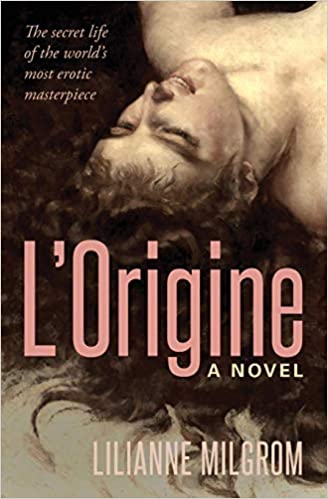
Lilianne Milgrom’s short novel is a fun escape to France. I tore through it in about two days enjoying Milgrom’s experience of traveling to Paris and receiving permission to paint a copy of Gustave Courbet’s scandalous painting “L’Origine du monde” (“The Origin of the World”) at the Orsay Museum in Paris. This small painting from 1866 was made for a private collector and was originally intended to be kept from the public but eventually found its way to its current place of honor on the walls of the Orsay Museum. The first part of the book is a personal chronicle of the artist’s experience painting the copy in the museum and the second part is a novel about the provenance of this painting as it changed owners over years, a dramatic history based on research but given life through deliciously imagined conversations dreamt up by the author. It was fun to take a mental trip abroad, revisit Courbet and follow the curious journey of this prurient painting.
Marking Time: Art in the Age Mass Incarceration, Nicole R. Fleetwood

I purchased a signed copy of this exhibition catalogue after walking through Marking Time: Art in the Age of Mass Incarceration at MoMA PS1. I have not read this book yet but is next in line. This exhibition was masterly curated by Nicole R. Fleetwood who tackled this delicate subject mainly with the work of those previously or currently incarcerated. The individuals represented in this show are both subject and author, a refreshing presentation that does not rely on outside or privileged voices to speak for others.
Paper Bullets: Two Artists Who Risked Their Lives to Defy the Nazis, Jeffrey H. Jackson
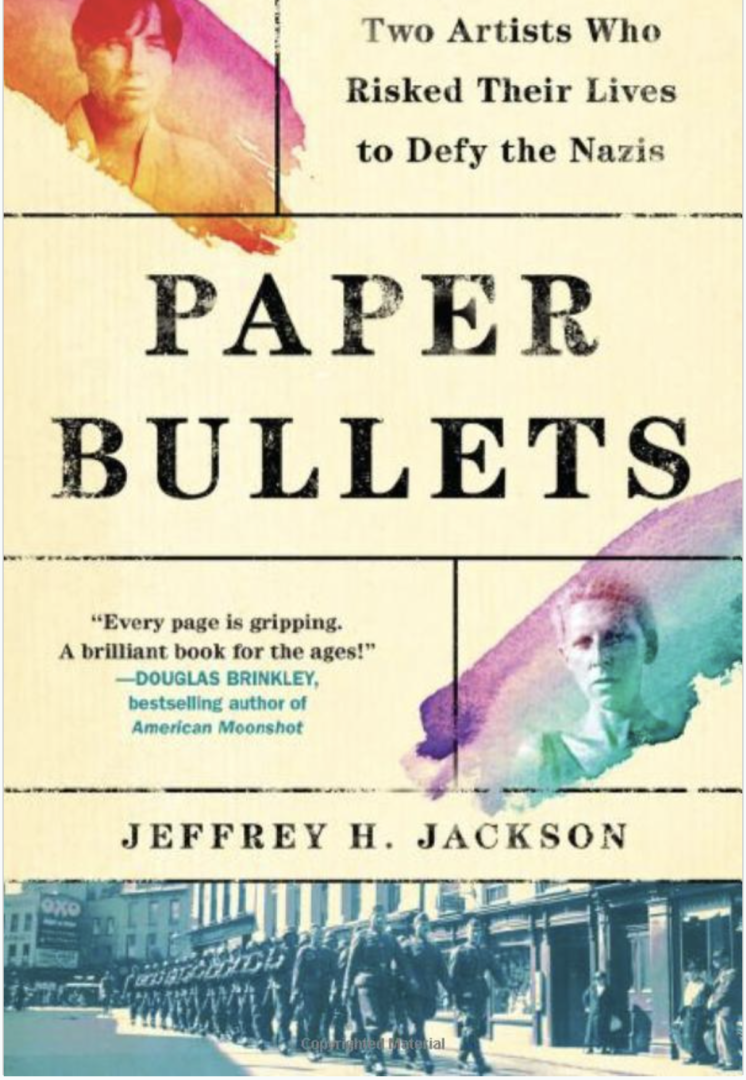
I recently learned about this book through a book review on Daily Art Magazine and barely made it to the bottom of the page before I had placed an order for this book. I have always meant to read more about Claude Cahun and this book could not have arrived at a better time. It is also at the front of the line for books to read in 2021.
For more posts about art around New York City and abroad click here.
For more about family travel, local (NYC) and abroad, click here.
Click here if you are looking for a little guidance planning your next vacation.

